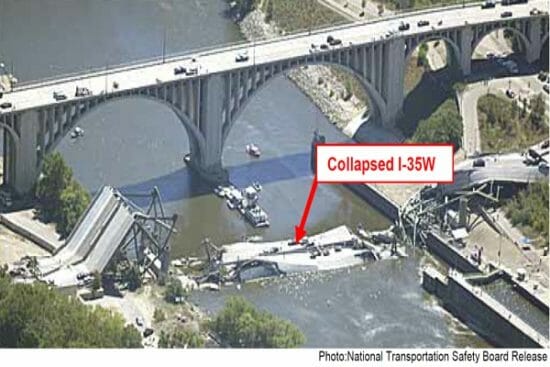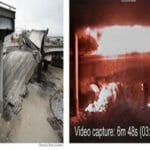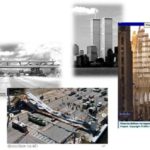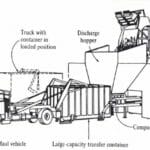- Course No E – 1910
- PDH Units: 2
No data found for Custom Course Number
No data found for Custom Course Units
Intended Audience: All Engineers
Credits: 2 PDH Units
On August 1, 2007, just after 6:00 pm, the I-35W bridge over the Mississippi River in Minneapolis suddenly collapsed. Thirteen people perished, and another 145 were injured, many seriously. The main river crossing structure consisted of two parallel steel deck trusses supporting the transverse truss girders, which in turn supported the reinforced concrete deck slab. The connections of the truss members were double gusset plates mostly riveted in the shop to the members. A few connections had field bolts for field erection. The steel trusses were “fracture critical,” which means fracture of one member or its gusset plate connection would result in the collapse of the entire span. The post-collapse investigations established the cause of collapse to be the failure of the two gusset plates in a single truss connection designated as Node U10. The reason for the two gusset plates in this connection to fail was that in the original design, the thickness of the gusset plates in this Node 10, was specified to be ½-inch, whereas, after the collapse, calculations clearly showed that it should have been 1-inch. So the engineering and scientific reason for the collapse was a design error in the original design. However, the main question in the aftermath of the tragic collapse was: why such a major design error did not manifest itself in some kind of local distress during the almost 40 years that the bridge was under service? The answer is that in the aftermath of the collapse, it was clear that, in fact, at least four years before the collapse, the engineering firm that was hired by MN DOT to do the inspection of the bridge had taken photos of the members and gusset plates and in their report gusset plates in Node 10 are seriously buckled and deformed, but the report states the condition of the gusset plate is “Good.” One might say that this is “incompetence” and not “unethical” behavior. But, Dr. Astaneh, by using publicly available factual information, will show that, even with such a major design flaw, if the inspecting firm that did the inspection of the bridge four years before the collapse, had followed the first canon of the Code of Ethics for Engineers which states: “Engineers, in the fulfillment of their professional duties, shall: Hold paramount the safety, health, and welfare of the public,” the tragic collapse would have been prevented. References and Recommended Further Readings:
- (1961). “Standard specification for highway bridges”, American Association of State Highway Officials.
- Astaneh-Asl, A. (2008). “Progressive Collapse of Steel Truss Bridges, the Case of I-35W Collapse”, Invited Keynote paper, Proceedings , 7th International Conference on Steel Bridges, Guimarăes, Portugal, 4-6 June, 2008.
- MN-DOT.(2007). “Construction plans, inspection reports and other data on I-35W”, was posted on the web site of the Minnesota Department of Transportation right after the collapse.
- Snowbeck, C, Hoppin J, and Orrick, “Investigators scrutinize connector plates”, Pioneer Press Newspaper, August 10, 2007
- NTSB-Dockets. (2008). “Press releases, reports, photos and other information on I-35W”, the National Transportation Safety Board Docket on the Internet, 2007-2008.
- Manual for condition evaluation and load and resistance factor rating (LRFR) of highway bridges, American Association of State Transportation and High- way Officials, 2003.
- “Fatigue evaluation and redundancy analysis- Bridge No. 9340, I-35W over Mississippi river”, Report to Minnesota Department of Transportation, URS Corporation, July 2006.
- NTSB, (2008). “Collapse of I-35W Highway Bridge Minneapolis, Minnesota, August 1, 2007, Highway Accident Report NTSB/HAR-08/03., National Transportation Safety Board, Washington, D.C.
- Code of Ethics of National Society of Professional Engineers (NSPE)
- NSPE Ethics Guide
- ASME “Code of Ethics of Engineers”.
- ASCE Code of Ethics
- Ethics, Technology, and Engineering, a textbook by Ibo van de Poel and Lambèr Royakkers, Wily-Blackwell, 2011.
- Concepts and Cases-Engineering Ethics, a textbook by Charles E. Harris et al., published by Cengage2019.
Learning Objectives
At the successful conclusion of this course, you’ll be able to identify and discuss:- What are the “legal” and “ethical” responsibilities of engineers to “hold safety paramount”
- Why engineers and managers should not give priority to financial considerations at the expense of ignoring safety concerns.
- How “group-think” within the engineering firms can blind engineers to “hold safety paramount” by downplaying safety concerns expressed by one individual in the group.
- What is the “normalization of deviance” in engineering and scientific research?
- How “normalization of deviance” was the leading cause of the I-35W tragic collapse.
- How “willful or intentional blindness” of engineers can create safety-related disasters
- What is the important concept of “preventive ethics” proposed by Charles E. Harris Jr. in 1995?
- How by following “preventive ethics” this tragic collapse could have been prevented.
Course Reviews
5
- 5 stars0
- 4 stars0
- 3 stars0
- 2 stars0
- 1 stars0
No Reviews found for this course.
Once completed, your order and certificate of completion will be available in your profile when you’re logged in to the site.










